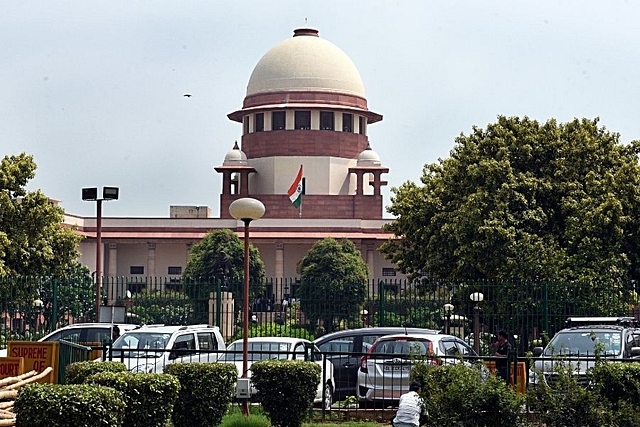
SC Bench Framing Sabarimala Issues Misses Elephant In The Room: Equal Rights For Hindus
The SC bench should not miss the golden opportunity to deliver equal rights to Hindus by reading articles 25-30 as they should be – rights available to all and not just minorities.
A nine-judge constitutional bench has framed seven questions relating to religious freedom and its limits, the rights of religious denominations to their own special practices in the context of the 2018 Sabarimala verdict, the demand for allowing women to pray at mosques, and the permissibility of religious practices like female genital mutilation (FGM).
The bench, comprising Chief Justice Sharad A Bobde, has justices R Banumathi, Ashok Bhushan, L Nageswara Rao, M M Shantanagoudar, S A Nazeer, R Subhash Reddy, B R Gavai and Surya Kant as it members.
The seven questions the bench will examine are the following:
#1: What is the scope and ambit of religious freedom under Article 25 of the Constitution?
#2: What is the interplay between religious freedom and the rights of religious denominations under Article 26 of the Constitution?
#3: Whether religious denominations are subject to fundamental rights?
#4: What is the definition of ‘morality’ used in articles 25 and 26?
#5: What is the ambit and scope of judicial review of Article 25?
#6: What is the meaning of the phrase “sections of Hindus under Article 25 (2)(b)?
#7: Whether a person not belonging to a religious group can question the practices and beliefs of that group in a PIL petition?
These are, no doubt, weighty issues, but the bench has missed three elephants in the room, given that they underlie all these questions.
First, when examining the scope and ambit of Article 25, which talks of the “freedom of conscience and free profession, practice and propagation of religion”, how can it avoid looking at a scenario where the state controls over 100,000 Hindu temples – and only Hindu temples. Will these states “propagate” Hinduism or does control of temples by the state hinder the rights of Hindus to propagate their religion?
Second, can the bench avoid references to articles 29 and 30, which confer special rights on minorities to run and administer their own religious, cultural and educational institutions, when a narrow reading of these articles has led to Hindus being excluded from the same freedoms?
Third, if you are examining the ambit of religious freedom under Article 25, is it not appropriate to consider whether the right to profess, practise and propagate religion is an individual right, or a right conferred on multi-billion dollar religious organisations?
The answer is simple. You cannot examine the guarantees given under Article 25 on “freedom of conscience and free profession, practice and propagation of religion” without also examining whether these are available to all religions or only some religions.
The SC bench has a golden opportunity to right many wrongs, and it should not miss this golden opportunity to deliver equal rights to Hindus by reading articles 25-30 as they should be – rights available to all and not just minorities.